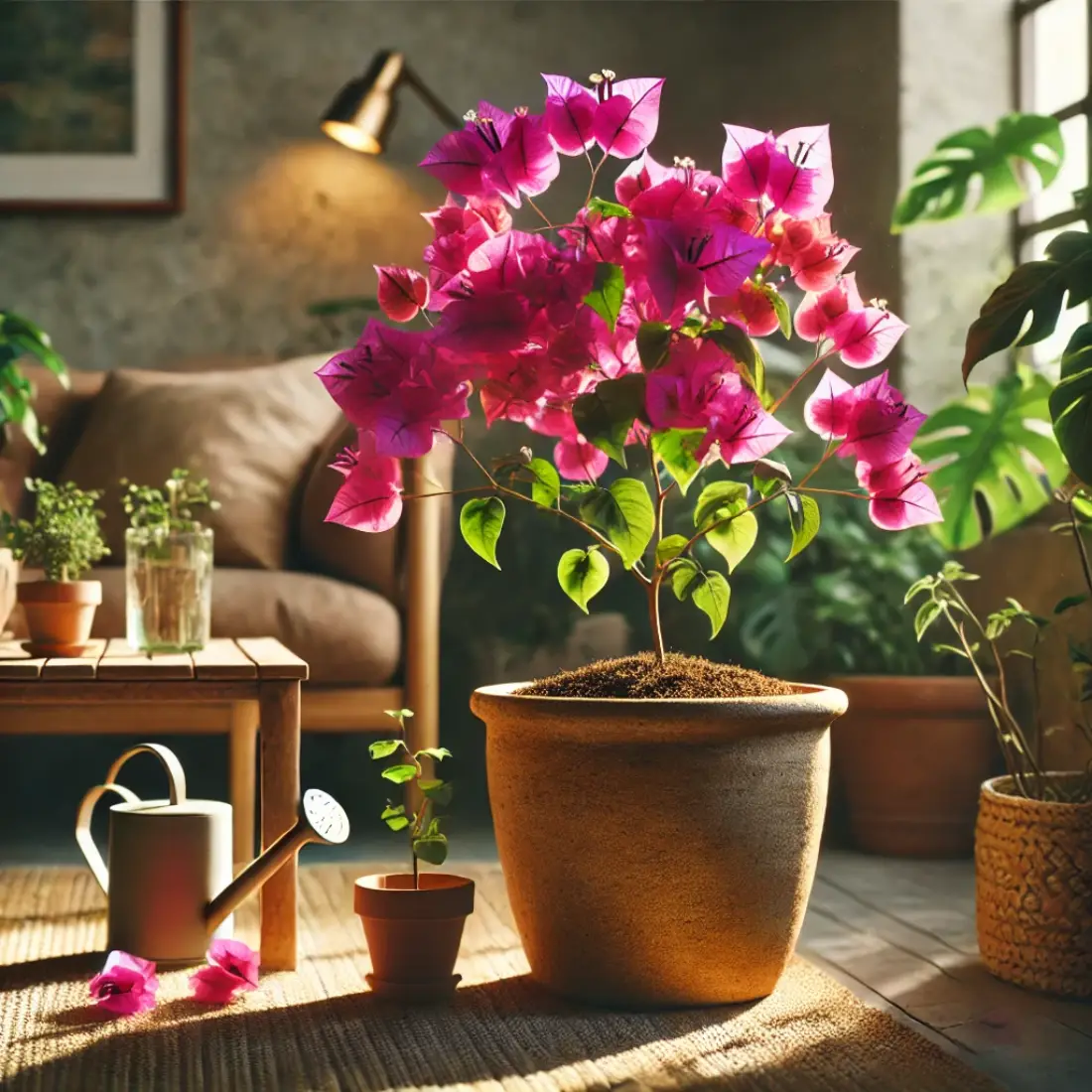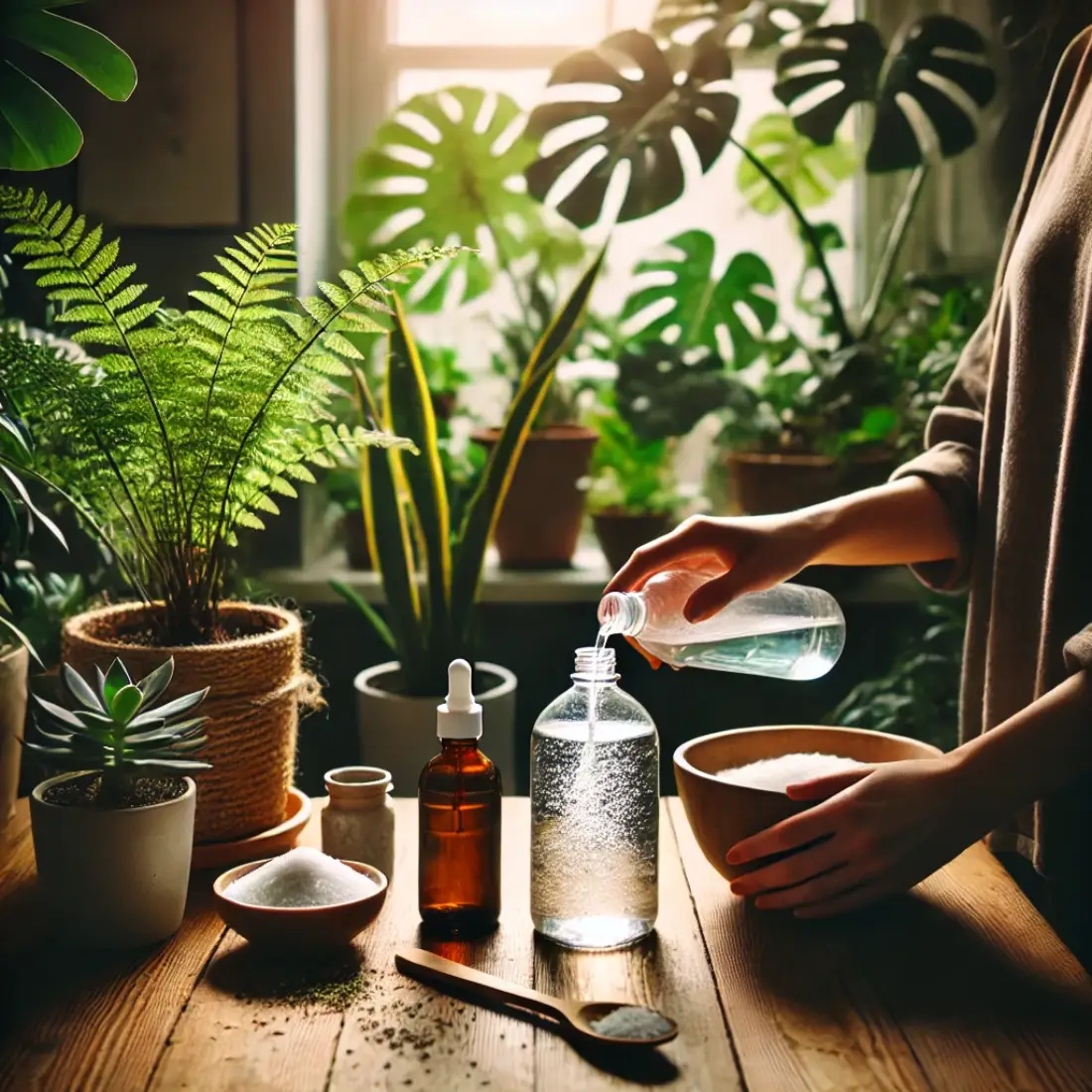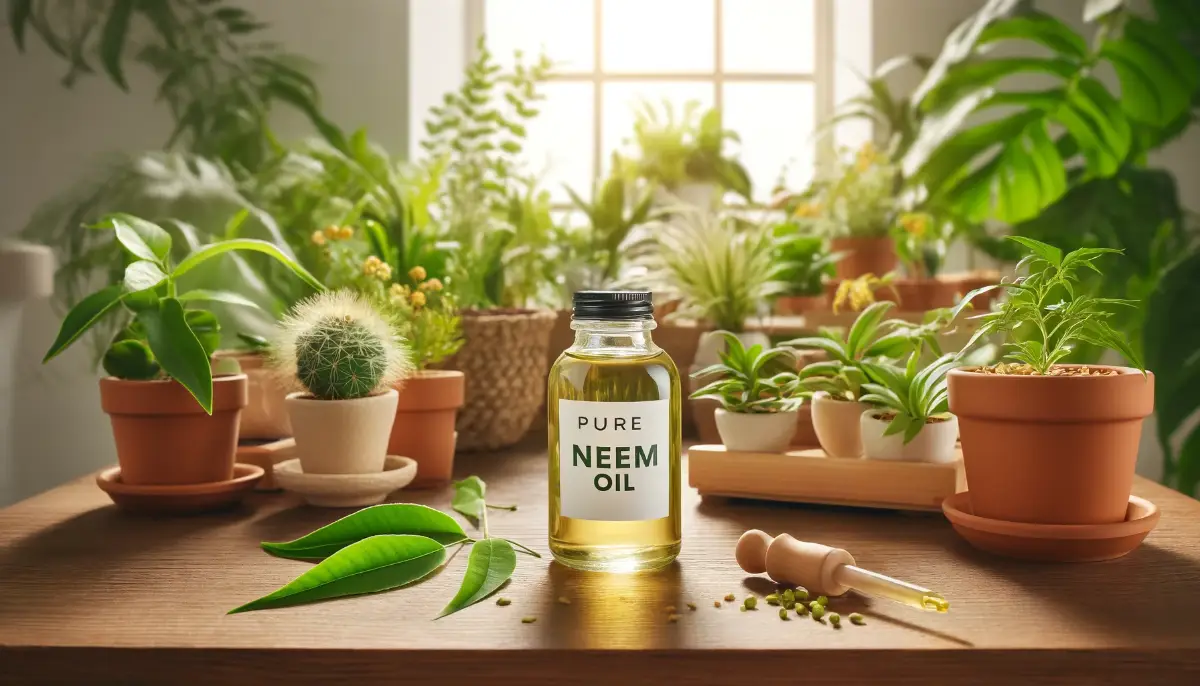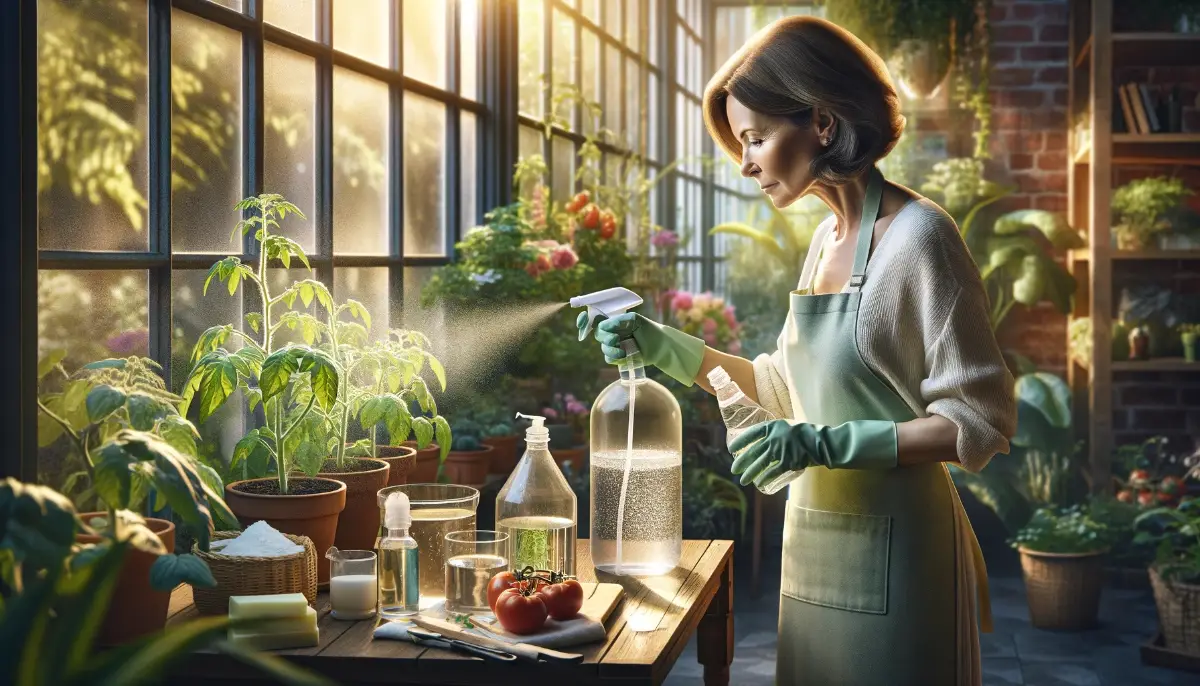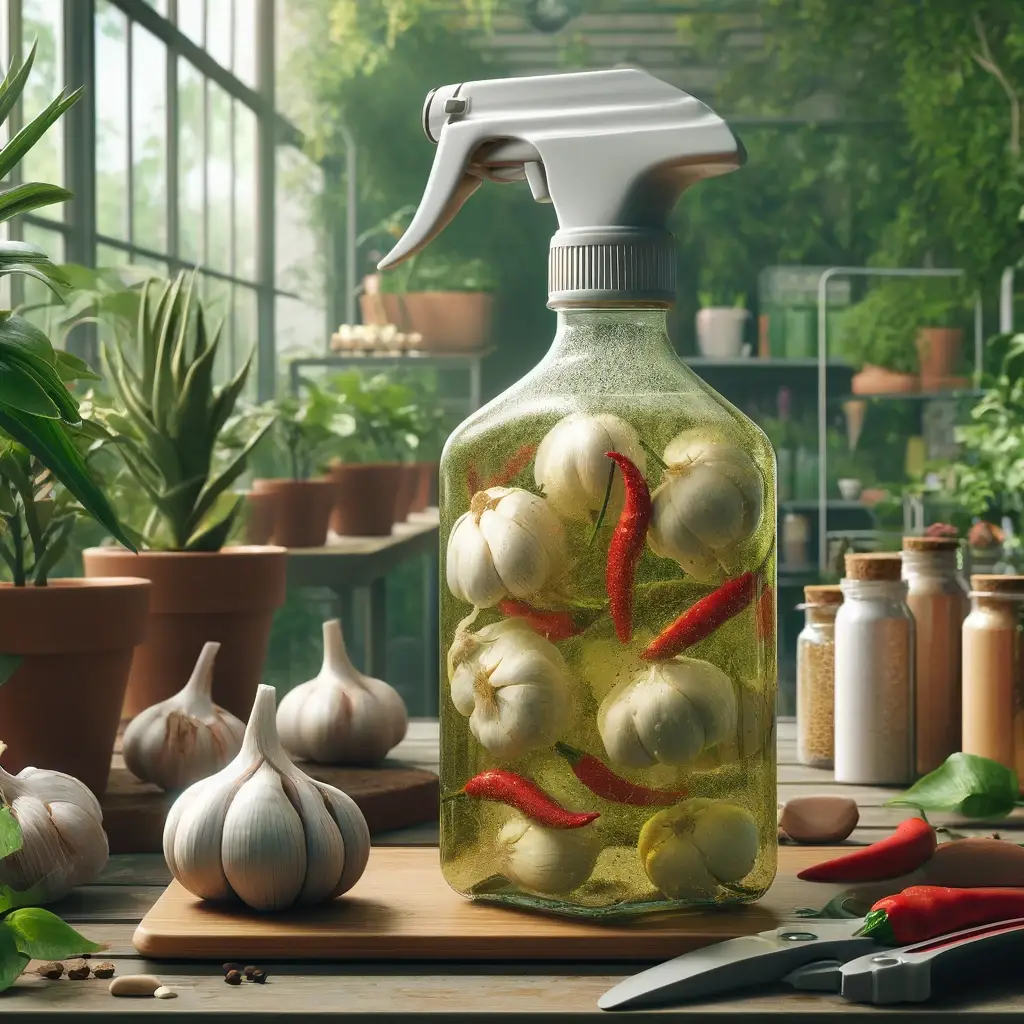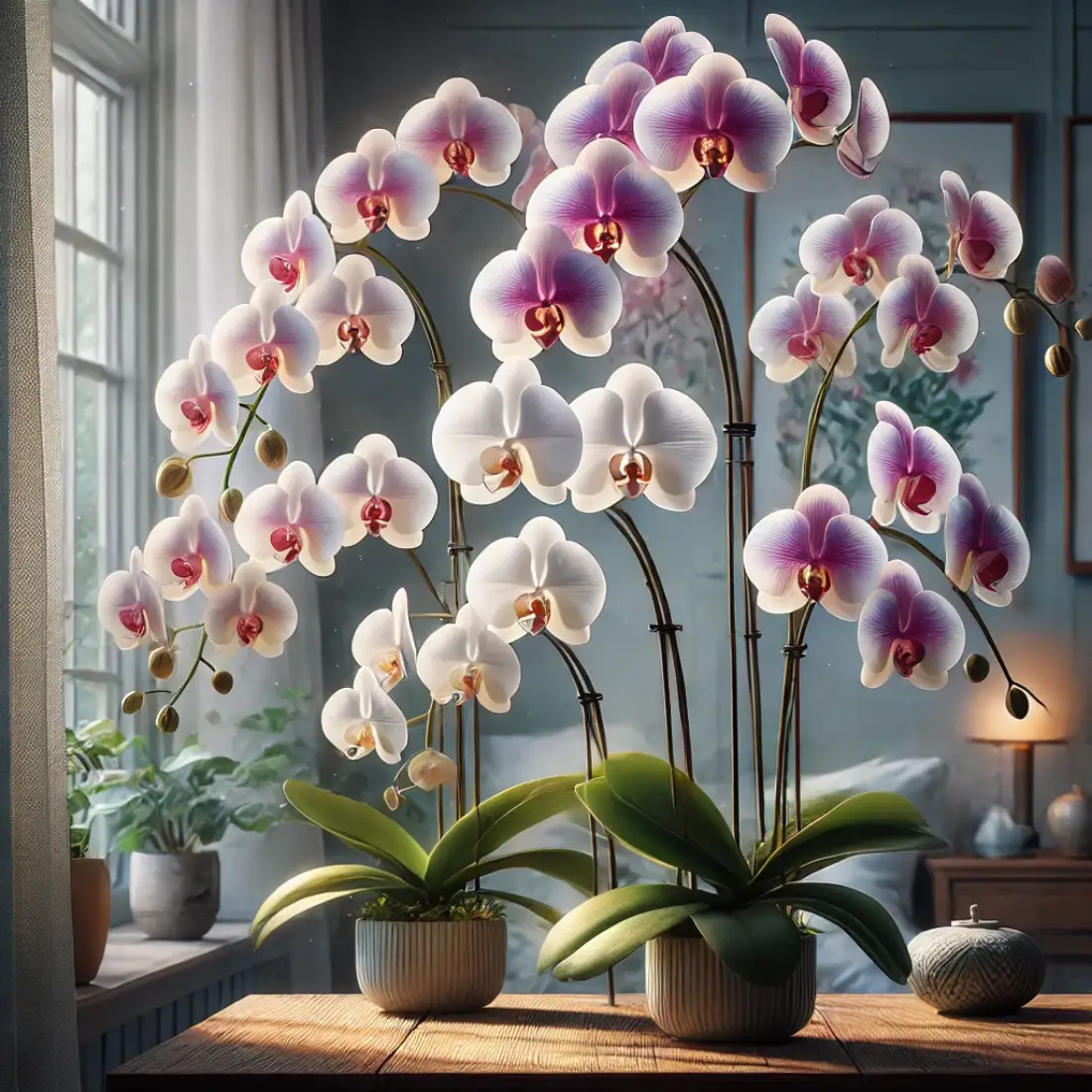Bougainvillea is a stunning, vibrant plant that can brighten up any indoor space with its colorful bracts. While it’s often grown outdoors, certain dwarf varieties can thrive indoors with the right care.
Growing bougainvillea organically ensures a healthy, toxin-free environment for both you and your plants. By using organic soil, natural fertilizers, and eco-friendly pest control methods, you can keep your bougainvillea blooming beautifully year-round.
- Choose dwarf varieties like Bougainvillea ‘Helen Johnson’ for indoor growing, as they are more compact.
- Place bougainvillea in full sunlight—at least 6 hours a day—to promote blooming.
- Use an organic, well-draining potting mix with compost, sand, and garden soil to ensure proper aeration.
- Water sparingly, only when the top inch of soil is dry, and avoid overwatering.
- Feed with organic fertilizers like compost tea or banana peels every 4-6 weeks during the growing season.
- Regular pruning and training will help maintain a compact, healthy shape.
- Use natural pest control, such as neem oil or insecticidal soap, to keep pests away.
Choosing the Right Indoor Variety
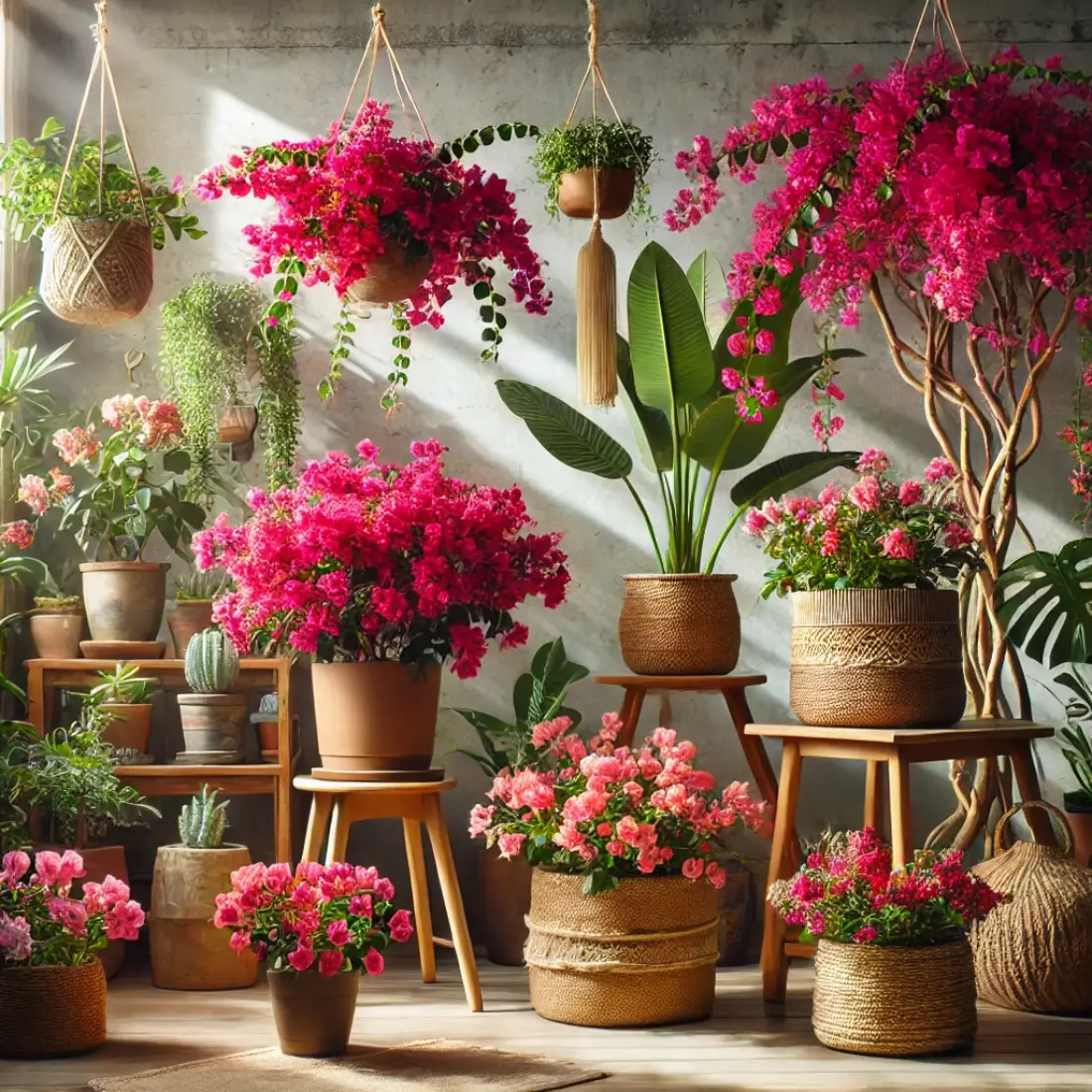
Not all bougainvillea varieties are suitable for indoor growth, so selecting a compact or dwarf variety is essential for success. These varieties are smaller and more manageable in containers, making them ideal for indoor environments. Here are some of the best choices:
- Bougainvillea ‘Helen Johnson’: A popular dwarf variety with stunning pinkish-bronze bracts. It’s compact and manageable, making it a great choice for smaller indoor spaces.
- Bougainvillea ‘Mini Thai’: Known for its compact size and beautiful magenta blooms, this variety works well in pots or hanging baskets.
- Bougainvillea ‘Pink Pixie’: A dwarf cultivar with bright pink bracts, perfect for small containers and indoor settings.
- Bougainvillea ‘Torch Glow’: Though not a true dwarf, this upright variety can be trained and pruned to grow indoors without taking up too much space.
Organic Potting Mix for Bougainvillea
Bougainvillea thrives in well-draining, nutrient-rich soil. Here’s an easy organic mix:
- 2 parts organic compost: Provides nutrients for growth.
- 1 part sand or perlite: Ensures good drainage to prevent root rot.
- 1 part garden soil: Adds structure and nutrients.
You can also add crushed eggshells or worm castings for extra calcium and richness. Use pebbles at the bottom for better drainage.
Planting Your Bougainvillea
- Choose the Right Pot: Use a terracotta pot with drainage holes, slightly larger than the root ball.
- Prepare the Pot: Add pebbles for drainage, then fill with organic mix.
- Planting: Gently remove the plant, place it in the center, and fill the pot with the mix, pressing lightly.
- Water Lightly: Just enough to settle the soil, allowing it to dry between waterings.
- Position: Place in a sunny spot with at least 6 hours of direct sunlight for healthy growth.
Organic Fertilizing for Bougainvillea
Bougainvillea requires regular feeding during its active growing season (spring and summer) to promote healthy growth and vibrant blooms. Using organic fertilizers ensures the plant gets the nutrients it needs without harmful chemicals. Here are the best organic options:
- Compost Tea: A nutrient-rich liquid fertilizer that can be made by soaking compost in water for a few days. This provides a gentle, steady supply of nutrients to the plant. How to use: Apply compost tea every 4-6 weeks during the growing season by watering the base of the plant.
- Banana Peels: High in potassium, which helps support blooming. You can bury chopped banana peels in the soil or create a banana peel tea by soaking them in water for a few days. How to use: Mix banana peel tea with water and apply monthly to promote flowering.
- Fish Emulsion: A quick-release organic fertilizer rich in nitrogen, ideal for encouraging foliage growth and general plant health. How to use: Dilute fish emulsion in water and apply every 4-6 weeks during the growing season.
- Worm Castings: Excellent for providing a balanced supply of nutrients and beneficial microbes to the soil. Worm castings improve soil structure and moisture retention. How to use: Mix worm castings into the top layer of soil once or twice a year.
Pruning and Training Bougainvillea
Pruning and training your indoor bougainvillea helps maintain its shape, promotes new growth, and encourages more vibrant blooms. Here’s how to do it organically and effectively:
Pruning for Health and Shape
- Timing: Prune after the blooming period, typically in late summer or early fall. This ensures the plant has time to recover and bloom again in the next cycle.
- What to Remove: Trim back dead or weak branches to keep the plant healthy. Cut back any leggy growth to encourage a bushier, more compact shape. Use sharp, sterilized pruners to make clean cuts just above a leaf node (where the leaf meets the stem).
- Encouraging More Blooms: Light pruning during the growing season can stimulate more blooming. Cut back any overgrown branches by about a third to keep the plant tidy and encourage fresh flowers.
Training Bougainvillea
Bougainvillea can be trained to grow on a small trellis, keeping it compact and decorative for indoor spaces.
- Support System: Use a small trellis or wire frame to guide the plant’s growth. This helps maintain its structure and keeps the plant upright.
- Tying Branches: As the plant grows, gently tie the branches to the trellis using soft plant ties or twine. Avoid pulling the branches too tight to prevent damage.
- Direct Growth: Regularly check the plant’s growth and adjust its ties to encourage the desired direction. This keeps the bougainvillea growing in a compact, controlled manner.
Organic Pest Control for Bougainvillea
Indoor bougainvillea can occasionally attract pests such as aphids, spider mites, or whiteflies. To keep your plant healthy without using harmful chemicals, organic pest control methods are effective and safe. Here are some natural solutions:
1. Neem Oil
- Why use it? Neem oil is a powerful organic insecticide that works against a wide range of pests, including aphids, mites, and whiteflies. It disrupts the pests’ life cycle, preventing them from feeding and reproducing.
- How to use: Mix 1 teaspoon of neem oil with 1 quart of water and a few drops of mild soap. Spray the solution onto the plant’s leaves, especially the undersides where pests often hide. Repeat every 7-10 days as needed.
2. Insecticidal Soap
- Why use it? Insecticidal soap is a simple and effective way to remove soft-bodied insects like aphids and spider mites. It suffocates pests without harming your plant.
- How to use: You can make your own insecticidal soap by mixing 1 tablespoon of mild liquid soap with 1 quart of water. Spray it directly on the affected areas of the plant. Apply in the early morning or evening to avoid sunburning the leaves.
3. Homemade Garlic or Chili Spray
- Why use it? Both garlic and chili have natural insect-repelling properties. A homemade spray can deter pests without harming your bougainvillea.
- How to use: Blend a few garlic cloves or chili peppers with water, strain the mixture, and spray it on your plant. Use it as a preventative measure every 2 weeks.
Organic Tips for Healthy Growth of Indoor Bougainvillea
To keep your indoor bougainvillea thriving, focus on creating an environment that mimics its natural conditions, using organic methods to support its growth. Here are some essential organic tips for healthy, vibrant bougainvillea:
Mulching for Moisture Retention
- Why mulch? Adding a layer of organic mulch helps retain moisture in the soil while preventing weeds.
- How to use: Apply a thin layer of organic mulch (like straw, bark chips, or shredded leaves) around the base of the plant. Keep the mulch a few inches away from the stem to avoid rotting.
Epsom Salt for Vibrant Color
- Why Epsom salt? It provides magnesium, which boosts chlorophyll production, resulting in healthier leaves and more vibrant blooms.
- How to use: Mix 1 tablespoon of Epsom salt into a gallon of water and apply once a month to enhance the plant’s overall health and color.
Companion Planting
- Why use companion plants? Certain plants can help deter pests or improve soil health when grown near your bougainvillea.
- Best companions: Try placing basil, marigolds, or lavender nearby (if space permits) to naturally repel harmful insects.
Use Rainwater or Distilled Water
- Why rainwater? Bougainvillea prefers slightly acidic conditions. Tap water can contain salts and chemicals that may affect the plant’s health.
- How to do it: Collect rainwater or use distilled water to avoid hard water build-up, which can affect soil quality and plant health over time.
Rotate the Plant for Even Growth
- Why rotate? Rotating your bougainvillea ensures that all sides get equal exposure to sunlight, promoting even growth.
- How to do it: Every couple of weeks, turn the pot slightly so the plant doesn’t grow lopsided or stretch toward the light.
Organic Compost for a Nutrient Boost
- Why compost? Organic compost is an excellent slow-release fertilizer, feeding your plant over time without the risk of over-fertilizing.
- How to apply: Top-dress the soil with a thin layer of compost every 6-8 weeks during the growing season for continuous nourishment.
Common Issues and Organic Solutions for Indoor Bougainvillea
Despite being relatively low-maintenance, indoor bougainvillea can experience some common problems. Here’s how to address them organically:
Yellowing Leaves
- Cause: Overwatering or poor drainage.
- Solution: Let the soil dry out between waterings. Ensure your pot has drainage holes and consider adding more perlite or sand to your potting mix for better aeration. Use a well-draining organic soil mix and avoid waterlogged conditions.
No Blooms
- Cause: Insufficient sunlight or over-fertilizing with nitrogen.
- Solution: Bougainvillea needs at least 6 hours of direct sunlight per day to bloom. Move it to a sunnier location if necessary. Avoid high-nitrogen fertilizers, as they promote leaf growth at the expense of flowers. Use potassium-rich fertilizers like banana peels to encourage blooming.
Leggy Growth
- Cause: Insufficient light or lack of pruning.
- Solution: Move your bougainvillea to a brighter spot, ideally where it receives full sun. Prune back long, spindly stems to encourage bushier growth. Regular pruning after each bloom cycle keeps the plant compact and full.
Root Rot
- Cause: Overwatering or poor drainage.
- Solution: Root rot is common when the plant is sitting in soggy soil. Repot the bougainvillea using a well-draining organic potting mix, and ensure the pot has proper drainage holes. Water only when the top inch of soil is dry.
Pests (Aphids, Spider Mites, Whiteflies)
- Cause: Dry conditions or poor air circulation.
- Solution: Increase humidity by misting the plant or placing it on a humidity tray. Use organic pest control methods like neem oil or insecticidal soap to manage infestations. Regularly wipe the leaves with a damp cloth to prevent pests from establishing.
Leaf Drop
- Cause: Sudden environmental changes, such as a move to a different spot, drafts, or cold temperatures.
- Solution: Keep your plant away from cold drafts and sudden temperature changes. Ensure it’s getting consistent warmth and sunlight. If you’ve recently moved the plant, give it time to adjust, as bougainvillea can be sensitive to changes.
Stunted Growth
- Cause: Nutrient deficiencies or root-bound conditions.
- Solution: Feed the plant with organic compost tea or fish emulsion to replenish nutrients. If the plant is root-bound (roots tightly packed in the pot), consider repotting it into a slightly larger container with fresh organic soil.
FAQs About Growing Indoor Bougainvillea
Can bougainvillea be grown indoors?
Yes, with the right variety and care, bougainvillea can thrive indoors. Choose compact or dwarf varieties and ensure they receive plenty of sunlight.
How much sunlight does indoor bougainvillea need?
Bougainvillea requires at least 6 hours of direct sunlight each day. Place it near a bright, sunny window for the best growth.
How often should I water indoor bougainvillea?
Water sparingly. Let the top inch of soil dry out before watering again. Bougainvillea prefers drier conditions to avoid root rot.
What is the best soil for indoor bougainvillea?
Use a well-draining organic potting mix made of 2 parts compost, 1 part sand or perlite, and 1 part garden soil to prevent waterlogging.
Why is my bougainvillea not blooming indoors?
Lack of blooms is often due to insufficient sunlight or over-fertilizing with nitrogen. Ensure it’s getting enough light and use potassium-rich organic fertilizers.
How can I fertilize bougainvillea organically?
Use organic fertilizers like compost tea, banana peels, or fish emulsion every 4-6 weeks during the growing season to encourage healthy growth and blooming.
When should I repot my indoor bougainvillea?
Repot every 2-3 years or when the plant becomes root-bound. Use a slightly larger pot with fresh organic soil.
What pests commonly affect indoor bougainvillea?
Common pests include aphids, spider mites, and whiteflies. Use organic pest control like neem oil or insecticidal soap to manage infestations.
How do I prune indoor bougainvillea?
Prune lightly after blooming to remove dead branches and encourage bushier growth. Regular pruning keeps the plant compact and healthy.
Why are the leaves on my bougainvillea turning yellow?
Yellow leaves often indicate overwatering or poor drainage. Allow the soil to dry between waterings and ensure the pot has proper drainage holes.

